These are links for moving within this page
- Text Size
-
- Standard
- Large
These are links for moving within this page
It is the main content from here.
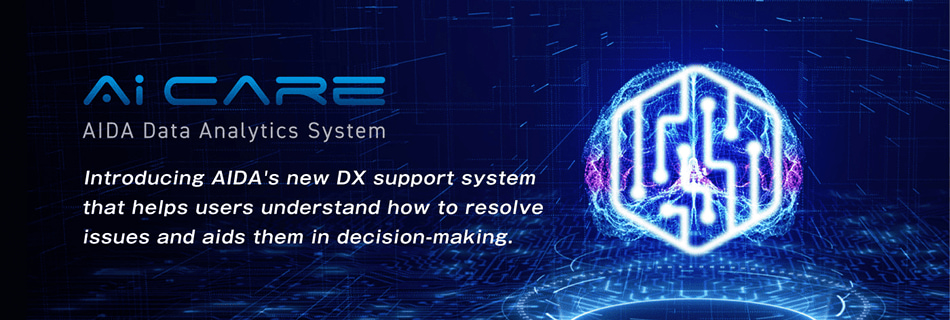
We have significantly evolved our existing "Ai CARE Information Management System" in order to support our customers' further transition to DX (digital transformation) technologies, and we are pleased to announce the launch of the new "AIDA Ai CARE Data Analytics System" service.
It is a shift from basic IoT (where things are interconnected) to technology that leverages the results of these interconnections.
We are introducing a DX system that goes beyond current systems and incorporates the wealth of experience and knowledge that only a forming systems builder can provide.
This system understands how to resolve issues and can be utilized for decision-making.
The “AIDA Ai CARE Data Analytics System" provides valuable visualizations of data stored in the cloud. Yet the greatest feature of the system is the data analysis grounded on AIDA’s many years of experience combined with AI technologies.
The meaningful pattern and trend information that emerges as a result of these analyses is provided to the user in easy-to-understand visual and verbal formats. With this kind of support, even inexperienced personnel take the shortest route when choosing the appropriate action.
What the "AIDA Ai CARE Data Analytics System" outputs is not merely numerical data, rather it provides information that allows you to see what steps to take next.
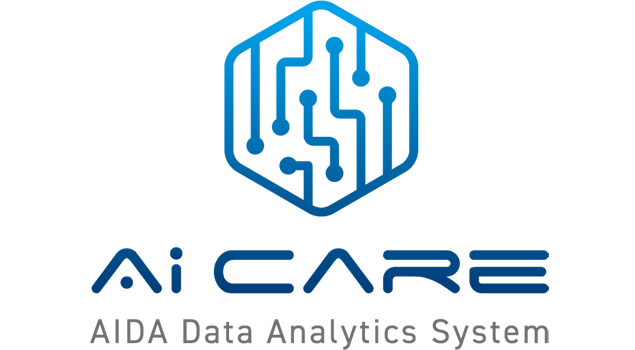
Data is gathered in real time from sensors mounted on presses and peripheral equipment. This data is uploaded to AIDA's dedicated cloud server via an Internet connection, where it is centrally managed. An array of AI-based applications in the AIDA Data Analytics System analyze and evaluate the gathered data. The applications then provide information to users that can be used to make business decisions. AIDA will periodically update the applications during the subscription period to enable its customers to always have access to the latest applications and features.
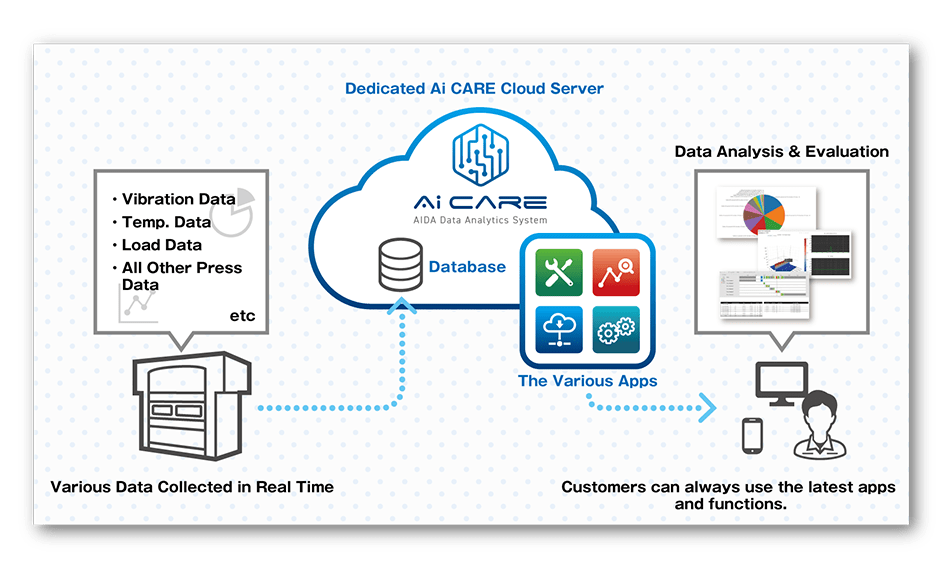
Includes the existing Ai CARE functions. Comprehensively manages machine information.
A 3D model allows users to easily check for forming load changes during each press stroke.
Aside from load data, it can also display vibration and pressure waveforms from various locations on the press. It can verify and manage forming quality.
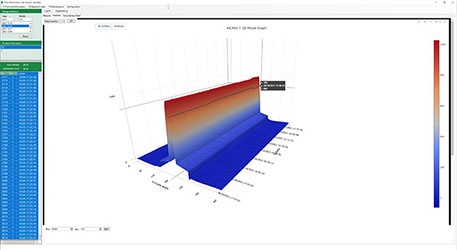
It displays the main motor energization time and operating time, the SPM setting, the production quantities, and the die change times, etc., and it sends out an email notification when a fault occurs. The system makes it easy to understand which equipment is experiencing faults and what type of faults have occurred most frequently, thereby enabling users to make improvements to increase utilization rates.
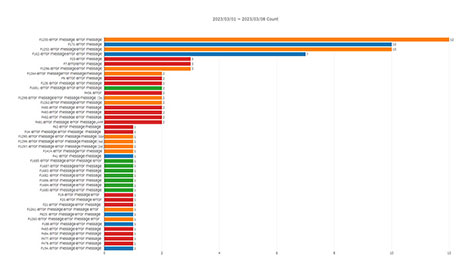
It can also display the number of fault occurrences for each product.
If a time period is specified, it is possible to see a ranked list of dies that have experienced frequent faults.
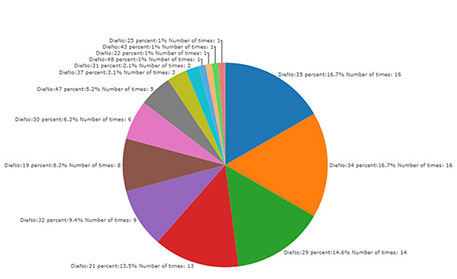
Displays daily operation information.
Because information such as "Production Quantities,' 'Operation Start/Stop Times,' 'Total Utilization Time,' and the 'Strokes Per Hour (SPH*)' can be outputted, it is easy to also utilize this as a simple daily report, which also helps reduce the daily workload of operators.
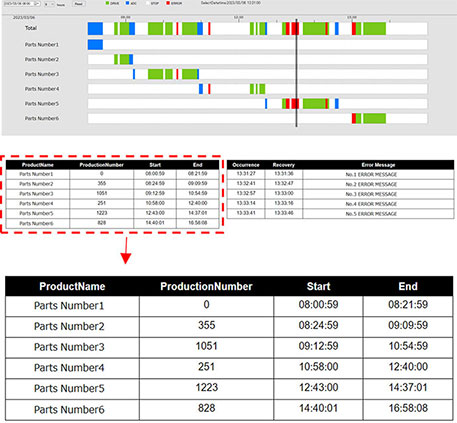
It displays a list of registered parts and the remaining service life of each part.
This enables planned maintenance, which translated into less downtime. The system also includes a feature that sends out email notifications about part replacements and inspection intervals.
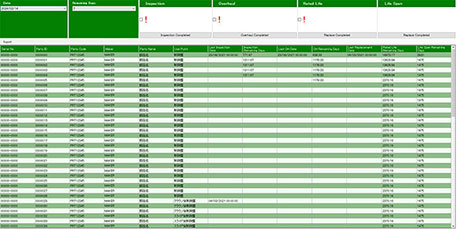
Newly developed Ai CARE functions use the latest analysis systems and AI technologies to provide information for decision-making.
The load application point is calculated from the press load waveform and is visually displayed for each cycle.
Because anomalies that are outside of the normal data range can be seen at a glance, it enables users to perform die maintenance in a timely manner.

The die monitor app analyzes die-related data and continuously monitors current die conditions. The app can also predict die life, enabling users to perform die maintenance in a timely manner.
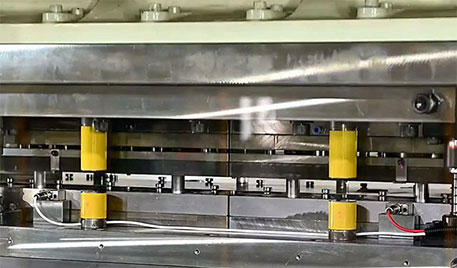
Based on a model gathered from normal operation data, AI monitors for anomalies between predicted values and measured values.
It is possible for the app to predict signs of failure at an early stage because it can detect very small anomalies that would be difficult for humans to notice.

This generative AI feature answers user's questions about operation methods, resetting methods, and forming methods based on AIDA's wealth of accumulated knowledge.
This allow users to quickly acquire the information they are seeking.

Fault occurrence locations are highlighted on a 3D model, making it possible to even pinpoint fault locations that are not externally visible.
When the highlighted location is clicked, the fault details and a manual containing fault resetting information will be displayed. This enables quick and precise inspections.
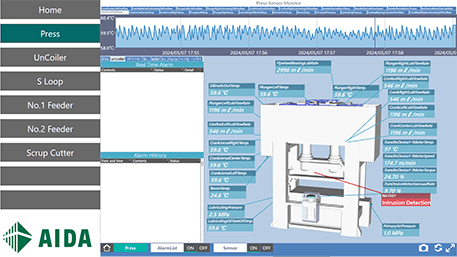
When an operator approaches the operation panel HMI, the system immediately cross-checks their face with the registered face image data, and press operation will be enabled if the images match.
This prevents erroneous operations by unauthorized personnel who are not registered in the facial recognition system.
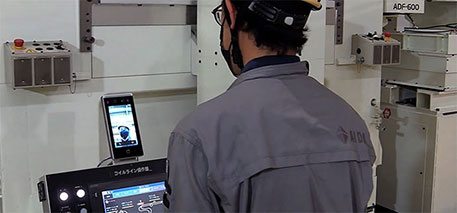
Performs offline simulations to automatically calculate transfer press slide motions that will not interfere with the motions of the transfer feeder.
This reduces adjustment tasks on the floor and enables rapid production startup. It also improves productivity by enabling fully optimized motion settings.
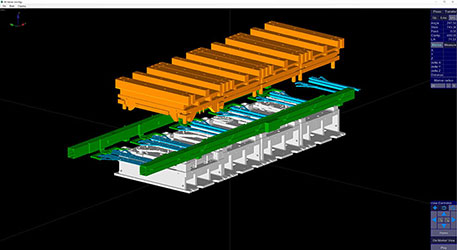
This system performs offline tandem line simulations to check the phasing between the motions of the various line equipment and to check for any interference.
This reduces adjustment tasks on the floor and enables rapid production startup. It also improves productivity by enabling fully optimized motion settings.
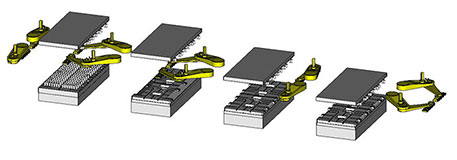
For further details or questions about our products, please contact an AIDA Sales representative.